Asclepias incarnata
This milkweed is easily distinguished by its bright pink flowers and long narrow leaves
Asclepias incarnata swamp milkweed
The swamp milkweed is smooth, with relatively narrow, lance-shaped leaves. Its magenta-pink flowers form in small umbels and, like other milkweeds, feature a 5-parted crown with five downward-facing petals and five horns emerging from tubular hoods. The curved horns arch over a short central column. Slender pods, about 4 inches long, contain numerous flat, brown seeds, each equipped with a fluffy parachute. When these pods split open, the seeds are dispersed by the wind. Swamp milkweed thrives in wetlands and swampy areas, and is pollinated by butterflies and bees.
Habitat & Range
Found in swamps, floodplains, and wet meadows. Prefers full sun to partial shade and moist, well-drained soils.
Present throughout the state.
Range: From British Columbia to Newfoundland and Labrador and in most of the United States except the west coast states.
| EMP: | OBL |
|---|---|
| NCNE: | OBL |
Phenology
Flowers June to August.
Characteristics
Inflorescence several clustered umbels
Flowers 5-parted crown: 5 downwardly reflexed pink or magenta petals supporting 5 cream (or pinkish) incurved vertical horns sticking out from cylindrical hoods & arching over a shorter column(containing stamens and carpels) in the center
Leaves simple, opposite, entire, lanceolate to oblong-lanceolate; tapering at the tip; short stalk
Stems erect, branched above; 3-5 feet long; mostly glabrous
Fruit slender pod 3 to 4″ long; green when young turning brown at maturity; seeds with white & fluffy parachutes attached
Height avg. height 4 feet, can grow up to 5 feet
Plant Codes
S-rank: S5 (Secure)
G-rank: G5 (Secure)
Ecology
Main pollinators are butterflies and bees. Monarch caterpillars feed on the leaves.
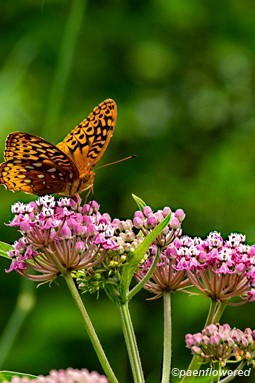

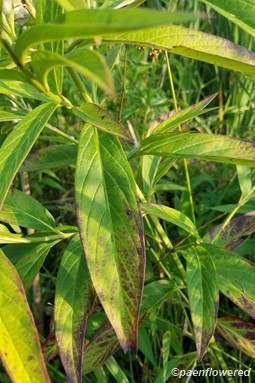

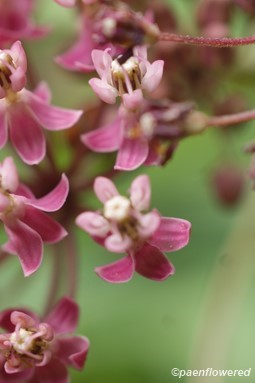
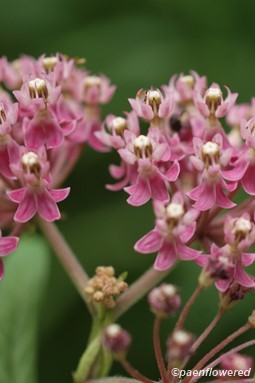
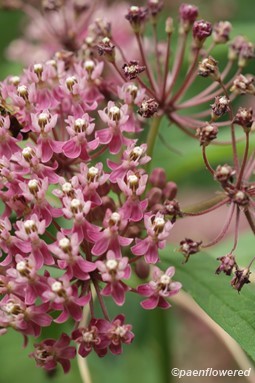
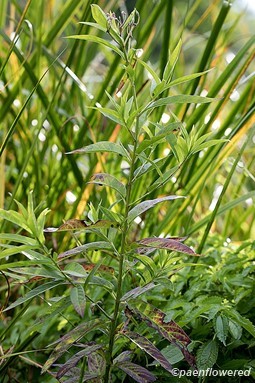


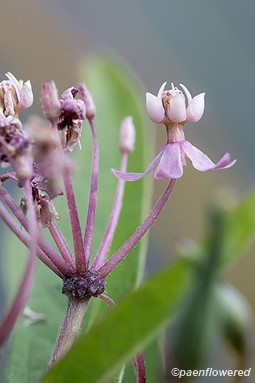
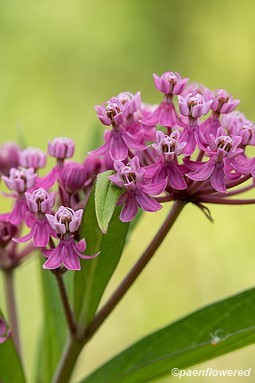

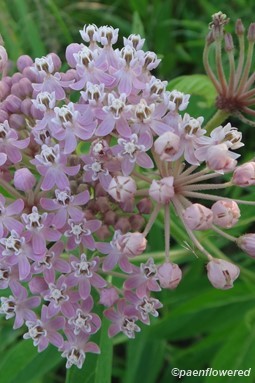








Comments
Have you spotted this plant in your area? We'd love to hear about your experience! Share your comments or questions about the plant below. Comments are moderated before posting.